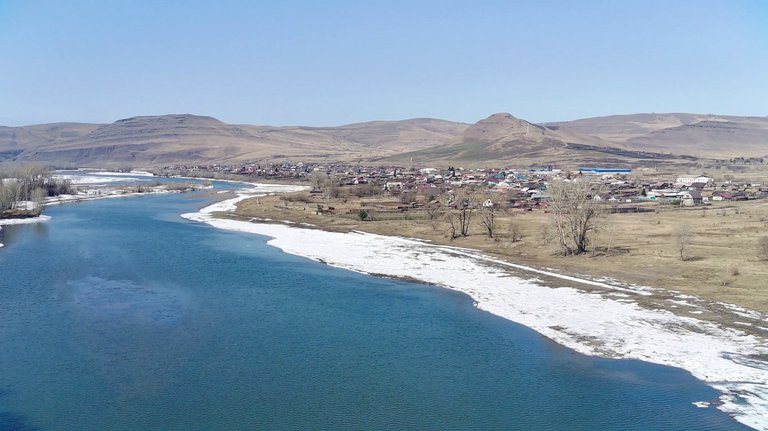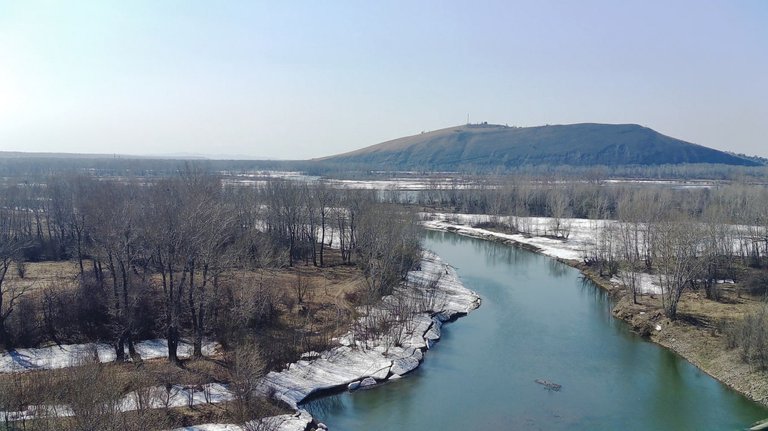Hello, friends.
Last Saturday we finally managed to find time to fly the drone.

We are still at the very beginning of spring - the snow has already melted, but the trees have not yet become covered with leaves, and there are still remnants of ice on the banks of the rivers. It’s as if the weather can’t decide on the temperature, one day the temperature is +20 degrees Celsius, we start taking off our jackets, but after a couple of days it’s already around zero, and at night it’s generally -7 degrees Celsius. In addition, a strong wind blows almost every day, sometimes warm from the south, sometimes cold from the north.

For drone flights, I chose the river bank near the village of Bystraya and the steppe behind the village. After a long break, it is necessary to restore your drone control skills. I like this quiet place, usually horses or cows graze here, but alas, last Saturday I did not meet any domestic animals.

But the banks of the river, bordered by white ice, stood out perfectly against the general gray background. In winter, the water level in the river rises due to ice formation downstream. The shores are flooded and frozen. After some time, the river bed returns to normal, the water goes away, and the ice on the banks remains almost until May, especially in dark places.


I suggest watching a short video of a drone flying over the channel:
Quadcopter: Xiaomi Fimi X8SE
Location: Russia, Siberia
Friends, thank you for your attention, see you soon.
Best regards @irvet

